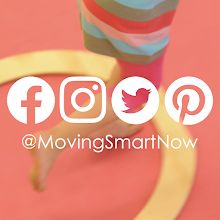New Zealand won its first gold of The Olympics today in Double Sculls. Congratulations Nathan Cohen and Joseph Sullivan for showing the world how it's done! Go Team New Zealand!
So, in keeping with our tribute to The Olympic Games, let's take a look at how a rowing team is formed...
SYNCHRONICITY
No matter how many oars you've got in the water, if they're not all rowing in the same direction, you'll never get anywhere. That's why rowing teams work to perfect synchronicity.
But how does a child just discovering the world learn to sync up with that world? Well, of course, it starts with you...
IMITATION
The goal of rowing as a team is to row as one... perfectly mirroring -- imitating -- each other's every precise movement stroke after stroke.
Young infants do much the same with us. Driven by an innate need to fit into their environment, they want to become like us, which means trying to move like us.
Imitation starts by observing you and your family with his eyes, ears, nose, touch, and of course, his mouth. Observation gives him the idea of what can be done which, in turn, motivates him to try to imitate what he sees. At first it won't look like much... a random smile or giggle, perhaps, or a vague-but-discernable interest in that soccer ball his big brother plays with. But as he gains more control over his body, he will soon be doing things on purpose and with control, and soon enough, that soccer ball will be his!
To encourage imitation, sensory stimulation is essential in these early years. Talking and singing to your child, playing with him at all different times of the day, gentle touching and rocking, and generally involving your infant in your family's everyday routine will give him lots to think about and try to imitate.
RHYTHM
In rowing, with or without a coxswain, the rhythm of the rowers is what keeps them all together.
Likewise, Body Rhythm is one of the tools your child uses to develop well-coordinated, whole-body movement. But surprisingly, it's also fundamental to language acquisition, which of course, will be essential to his understanding of our world... and to being understood by others.
You see the pattern, beat, and rhythm of your voice and the other voices around him give him a sense of how language comes together, and while he may not understand the words you speak, he will begin to get a sense of your intent through the way in which you naturally modulate your voice in speech or song.
POWER, STRENGTH & ENDURANCE
In rowing, arms and legs are working to their maximum potential, kept in control by the core muscles of the torso. The hands hold tight to the oars, while the feet provide the leverage the whole body needs for propulsion. In short, every muscle in the body is engaged.
And of course, that's what's happening with your young child as he plays naturally everyday. As he pulls, pushes, lifts, carries, climbs, runs, jumps, etc., he engages all of his muscles at different times in different ways, helping him develop overall fitness -- the perfect recipe for these young years.
But more, when your child is active throughout the day, he's building up endurance and resilience... the exact qualities he needs for the long row ahead.
Happy Olympics, everyone!
Rowing is one of the great sit-down sports in the world, so here's a fun game to play with your child (or between two children)... sitting down!
TEETER TOTTER TIPS
SET UP
Sit on the floor with your backs together and lock arms.
Start by leading the game so your child gets the idea, but your goal should be to have him take over leadership as soon as he's ready.
GAME PLAY
There's a teeter totter (see saw) on the playground in need of repair. It seems every time it teeters or totters, it giggles right out loud. We've got to put a stop to all that giggling!
Sometimes the teeter totter teeters...
LEAN FORWARD SLOWLY.
(As you do, your child will stretch backwards.)
And sometimes the teeter totter totters...
LEAN BACKWARDS SLOWLY.
(As you do, your child will bend forwards.)
And sometimes the teeter totter tips...
LEAN TO THE LEFT THEN TO THE RIGHT.
And once in a while, the teeter totter tickles!
GIVE YOUR CHILD A LITTLE TICKLE
Now try it again, only be sure to let your child take the lead and give out the tickles!
Enjoy!















Thanks for this post Gill. It's valuable for us to remember to treat our infants as competent partners in our relationships, by both empowering and scaffolding them in their learning.
ReplyDelete